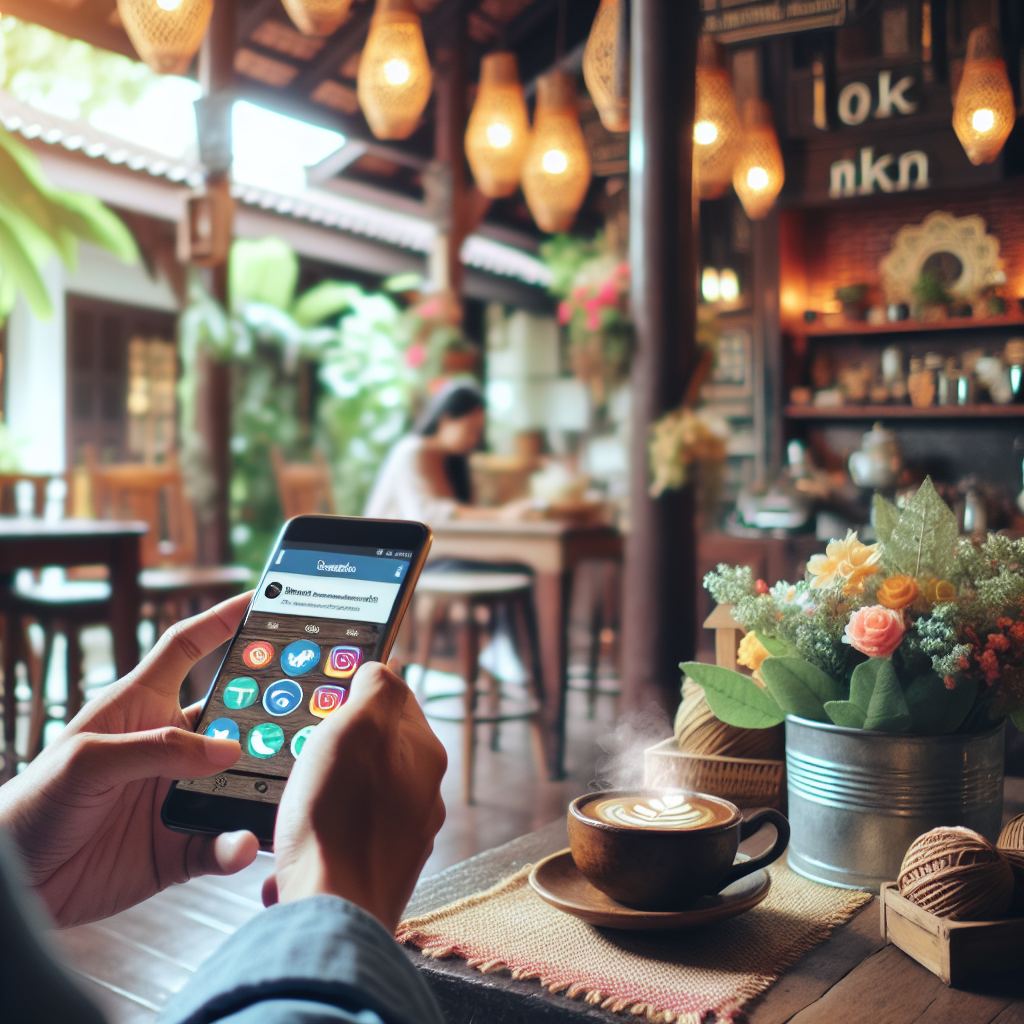How Southeast Asian Local Businesses Can Achieve Customer Growth Through Quality Content
Have you noticed that despite posting lots of content on social media for your homestay, cafe, or restaurant, customer traffic hasn't increased significantly? Do you spend considerable time daily updating Facebook and Instagram, yet wonder if these efforts actually bring tangible returns?
This is a common challenge faced by most local lifestyle businesses across Southeast Asia. The good news is that with the right social media content strategy, you can not only attract more target customers but also build stable customer relationships and achieve sustainable business growth. This article will provide you with a complete and actionable solution.

Building an Effective Content Marketing Framework
Define Your Content Objectives
Successful social media content marketing begins with clear goal setting. For local lifestyle businesses, the most important aspect is aligning content objectives with actual business needs. For example, if you operate a homestay, your primary goal might be improving booking conversion rates; if you run a restaurant, you're more focused on increasing foot traffic.
Take a boutique homestay in Chiang Mai, Thailand, as an example. They segmented their content objectives as follows: 30% of content showcasing room features and nearby attractions (boosting booking intent), 40% sharing local cultural experiences (building emotional connections), and 30% engaging with guests and sharing guest stories (enhancing trust). This clear content allocation helped them increase direct booking rates by 45% within six months.
Deeply Understand Your Target Customers
The core of content marketing lies in creating valuable content for the right people. Customer groups of Southeast Asian local businesses typically have distinct characteristics: seeking authentic experiences, valuing cost-effectiveness, and relying on social media for information.
Research shows that 68% of Southeast Asian consumers check social media content first when choosing local services. Therefore, you need to create content that answers customers' key questions: How is the experience here? Is the pricing reasonable? What feedback do other customers have? By continuously analyzing customer comments, private messages, and interaction behaviors, you can constantly optimize your content direction.

Content Creation and Publishing Strategy
Create a Diversified Content Mix
Single-type content struggles to continuously attract customer attention. Successful local businesses typically adopt a "four-pillar" content strategy: educational content (20%), entertaining content (30%), inspirational content (25%), and promotional content (25%).
Consider a specialty coffee shop in Singapore as an example. Their educational content includes coffee bean knowledge sharing and brewing techniques; entertaining content showcases interesting daily moments in the shop; inspirational content shares customers' success stories and wonderful moments; promotional content cleverly incorporates new product introductions and special offers. This balanced content strategy helped them grow their social media followers by 200% in one year while steadily increasing in-store traffic.
Optimize Publishing Times and Frequency
While content quality is crucial, timing is equally important. Experience shows that optimal posting times in Southeast Asia typically fall between 8-10 AM and 7-9 PM, when user activity is highest.
For posting frequency, homestay businesses should post 1-2 times daily, while restaurants and cafes can appropriately increase to 2-3 times daily. The key is maintaining consistency - it's better to reduce frequency than compromise content quality. A homestay in Kuala Lumpur, Malaysia, by consistently posting high-quality content at fixed times daily, extended their average booking lead time from 2 days to 10 days within three months.
Common Pitfalls and Challenges
Over-selling While Neglecting Value Provision
Many businesses mistakenly view social media as a free advertising platform, frequently posting promotional information and hard advertisements. In reality, this approach often backfires. Modern consumers prefer content that provides practical information, emotional value, or entertainment experiences.
The correct approach is adopting the "80/20 rule": 80% of content focuses on providing value to customers (practical tips, behind-the-scenes stories, customer experience sharing, etc.), with only 20% directly promoting products or services. This content strategy not only improves user engagement but also builds deeper customer relationships.
Lack of Cross-Platform Content Adaptation
Another common mistake is using identical content across different social media platforms. Facebook, Instagram, TikTok, and other platforms have significantly different user behaviors and content preferences. For instance, Instagram users prefer visually appealing content, while Facebook users are more willing to engage in in-depth discussions.
We recommend developing differentiated content strategies for each platform while maintaining consistency in core brand messaging. This maximizes each platform's communication effectiveness while preventing user content fatigue.
Conclusion and Call to Action
Effective social media content marketing isn't an overnight miracle, but a long-term strategy that achieves customer growth through continuously providing value and building trusted relationships. By defining objectives, understanding customers, creating diversified content, and avoiding common pitfalls, your local business can absolutely stand out in fierce market competition.
If you wish to systematically improve your social media marketing effectiveness or need a professional team to help develop personalized content strategies, please contact RedSparks. We specialize in providing comprehensive online traffic generation and customer relationship management solutions for Southeast Asian local lifestyle businesses, ensuring every content investment generates measurable business returns.

.png)